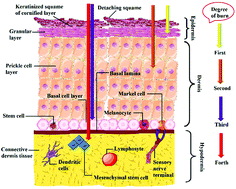Wound dressings functionalized with silver nanoparticles: promises and pitfalls
Abstract
Infections are the main reason why most people die from burns and diabetic wounds. The clinical challenge for treating wound infections through traditional antibiotics has been growing steadily and has now reached a critical status requiring a paradigm shift for improved chronic wound care. The US Centers for Disease Control have predicted more deaths from antimicrobial-resistant bacteria than from all types of cancers combined by 2050. Thus, the development of new wound dressing materials that do not rely on antibiotics is of paramount importance. Currently, incorporating nanoparticles into scaffolds represents a new concept of ‘nanoparticle dressing’ which has gained considerable attention for wound healing. Silver nanoparticles (Ag-NPs) have been categorized as metal-based nanoparticles and are intriguing materials for wound healing because of their excellent antimicrobial properties. Ag-NPs embedded in wound dressing polymers promote wound healing and control microorganism growth. However, there have been several recent disadvantages of using Ag-NPs to fight infections, such as bacterial resistance. This review highlights the therapeutic approaches of using wound dressings functionalized with Ag-NPs and their potential role in revolutionizing wound healing. Moreover, the physiology of the skin and wounds is discussed to place the use of Ag-NPs in wound care into perspective.

- This article is part of the themed collection: Recent Review Articles


 Please wait while we load your content...
Please wait while we load your content...